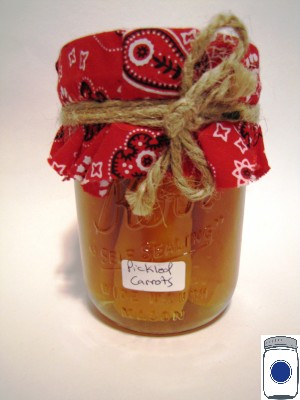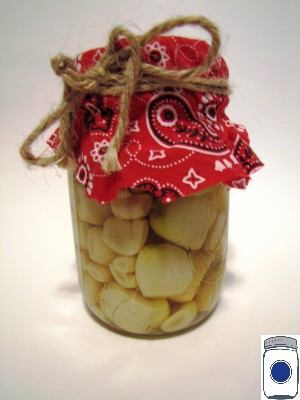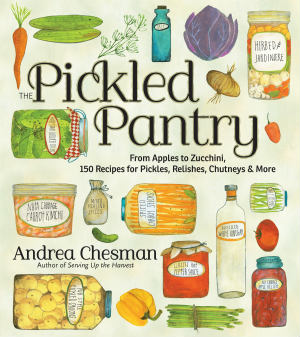Bringing Back the Bacteria
The Importance of Fermented Foods

Our family is starting the New Year with a conscious effort to consume fermented foods every day, and we are thoroughly enjoying it I must say. It’s the new chocolate. Okay, maybe not, but I crave these fermented foods when something is off balance in my own health. If you have not concocted your own fermentations, it is likely that you do not even know what you are missing. Unless you are old enough to remember the days of the pickle barrel at the general store, your store-bought sauerkraut and pickles are dead. They no longer ferment these foods commercially rather they pasteurize them. This means that the bacteria that leads to a healthy gut is absent from these once sacred foods. Perhaps I should start at the beginning . . .
Isn’t Bacteria a Bad Thing?
Icky germs. Is that not why we make our kids sing the Alphabet song during handwashing? Germs, yes, are icky indeed. “Germ” is a non-medical word commonly used to describe disease-causing single-cell microorganisms. But we need single-cell microorganisms—and in plenty—to live at all. Without them, life is not possible. For instance, a single gram (the weight of a paperclip) of soil contains 40 million bacterial cells (Nordqvist , 2009). It is not just the soil that is alive with bacteria; water, plants, animals, and even arctic ice require the presence of bacteria to exist. That list includes you.

No Such Thing As Sterile
It is only in our modern culture that we believe things should always be sterile. In fact, Steve Ettlinger mentions in Twinkie, Deconstructed that women shunned baking powder when it was first marketed because people would see them as lazy and even unfeminine for not spending the day baking sourdough breads from their fermenting bowl of yeast that sat on the back burner of the cookstove. Louis Pasteur entered the scene, revealing the presence of microbes and turned the stomachs of housewives everywhere (Ettlinger, p. 138). Thus, eliminating those healthy bacteria from the diet became fashionable and convenient. Like attempting high heels on an icy sidewalk, being fashionable is not always tenable–nor convenient. I often cringe at the moms who squirt hand sanitizer by the tablespoon into toddler hands that inevitably find their way to the mouth within a minute.
We live in an ultra-pasteurized society (FYI: Louis’ intention was never to kill your milk but to help a struggling wine industry). Whether we are discussing dairy products or antibiotics, we tend to blast away at the cellular level and think that all is right in the world (or our gut, as the case may be). I recently read this basic analogy in AutoImmune: The Cause and the Cure: if you have a mouse in the kitchen, do you use a mousetrap? Certainly—it easily extracts the problem with precision and little disruption to the kitchen. But in regards to bacteria, we want to use dynamite (antibiotics) when a mousetrap would do the job sufficiently (Brockley & Urdiales, 2012, p. 171). The sooner we grasp that the good bacteria are the foot soldiers against the icky germs, the sooner we will achieve full health without all of the side effects of the dynamite approach. Anyone forcing down vats of yogurt to combat the yeast infections subsequent to antibiotics knows exactly what I mean.
Grandma² (or Grandma’s Grandma)
If not your grandma, then her grandma made sourdough bread, had a crock of pickles in the basement, and relied heavily upon her sauerkraut to keep everyone healthy in the wintertime with fruits rich in Vitamin C were scarce. Sure, the Vitamin C had yet to be named—but your grandma’s grandma was a smart cookie and knew that those not getting it developed diseases like scurvy. Fermentation is one of the oldest forms of food preservation and the earliest written accounts of humanity mention wine and other fermented foods. They may not have used the terminology like “cultured foods”, “lacto-fermentation”, or “probiotic”, but the results were the same. These foods were necessary for not only health but for a simple method of food preservation to get through the non-growing seasons.

An Easy Place To Start
I was shocked at how simple it is to create fermented foods. There is no special equipment needed. I love canning as you know, but it does heat up your kitchen, take a lot of dishwashing, and it has a time investment too. Fermenting is as simple as washing the food, placing it into a jar as indicated by the recipe, and walking away. You should check on your fermentations occasionally to make sure that all-is-well. I think that my biggest difficulty was learning that a little fuzz does not necessarily warrant discarding the food altogether. Most fermentation books or recipes tell you to skim it off and keep going. Ewwww. But the singular precaution of keeping liquid levels above the fermented food will go a very long way in fuzz prevention, I promise. Remember, fermented foods are truly alive…and like your teeth remind you every morning; a little fuzz is just part of life.

Here are some things to keep in mind:
Cleanliness! You must start with a clean jar or crock, and you must thoroughly wash the produce and anything it will touch (such as a cutting board or knife).
Produce Quality If the food has already begun deterioration, it has multiplied the enzymes necessary for decomposition and is not suitable for fermentation (or any food preservation for that matter).
Salt Use either sea salt or “pickling salt” but not the iodized stuff. It inhibits the growth of the good bacteria.
Attentiveness You should check on the fermentation daily. You will need to use some common sense with it, and understand that an occasional failure is just part of the process. But if the flavor is off, you will know and you should discard it.
Storage The fermentation must “cure” in a dark, cool place. The ideal temperature is between 65-75° without much fluctuation. Grandma² preferred her root cellar, but if you do not have one (yet) a forgotten shelf in a walk-in closet or pantry will do the trick in our modern day climate-controlled house. Southerners who live in an area with a high water table (not possible to have a root cellar) have had luck putting jars directly on a concrete slab in a closet or garage to regulate temperature. Put a towel under the jars to catch any eruptions as the juice is prone to bubble from time to time.
Pickle Anything Seriously—from beets to garlic to carrots to…well….if it’s fresh produce, I am sure you will google up a list of people who have tried it. The above mentioned are some of my faves though, along with kimchi, sauerkraut, and the good old fashioned cucumber.
Start with a good book, like Pickled Pantry, and begin incorporating fermented foods into your daily diet!
Happy Fermentation,
Chaya
Resources:
Brockley, A., & Urdiales, K. (2012). Autoimmune: The cause and the cure. (2nd ed.). Nature Had It First.
Ettlinger, S. (2007). Twinkie, deconstructed, my journey to discover how the ingredients found in processed foods are grown, mined (yes, mined), and manipulated into what a. (First printing,March 2007 ed., Vol. 1, p. 138). London: Hudson st Pr.
Nordqvist , C. (2009, July 17). Medical news today. Retrieved from http://www.medicalnewstoday.com/articles/157973.php
Photo Credits:
Title: [Stanley Hyams, co-owner of Washington Pickle Works, holding two pickles in a room full of barrels of dill pickles] / World Telegram & Sun photo by Roger Higgins. Photo published 1959. Accessed here: http://www.loc.gov/pictures/item/2006686060/
Proviso:
Nothing in this blog constitutes medical advice. You should consult your own physician before making any dietary changes. Statements in this blog may or may not be congruent with current USDA or FDA guidance.


